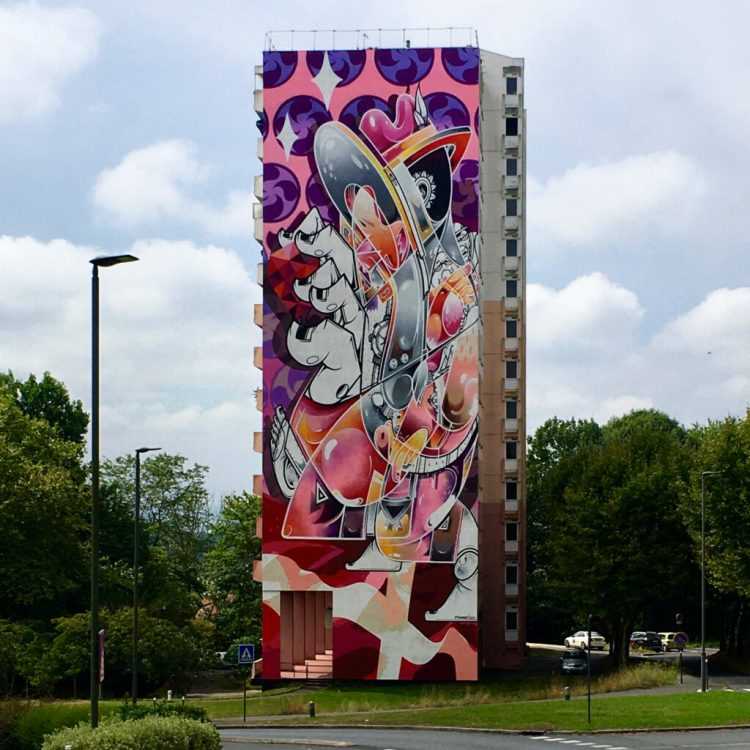
When it comes to street art, Bayonne is a city that truly stands out. Nestled in the picturesque Basque region of France, this cultural hub is home to an impressive collection of vibrant and thought-provoking artworks that adorn its walls.
From colorful murals to intricate graffiti tags, the street art scene in Bayonne is a visual feast for art enthusiasts and curious wanderers alike. The city’s streets serve as an open-air gallery, showcasing the talent and creativity of local and international artists.
One of the most striking aspects of Bayonne’s street art is its ability to transcend boundaries and bridge gaps between different communities. The art speaks to the diversity and rich history of the city, serving as a platform for social and political commentary.
Whether you’re walking through the historic Old Town or exploring the vibrant neighborhoods, you’re bound to stumble upon hidden gems of street art. Each piece tells a unique story, inviting viewers to pause and reflect on the world around them.
So, if you find yourself in Bayonne, take some time to wander off the beaten path and delve into the city’s street art scene. Discover the hidden corners adorned with colorful masterpieces, and let the art guide you through a journey of creativity, passion, and imagination.
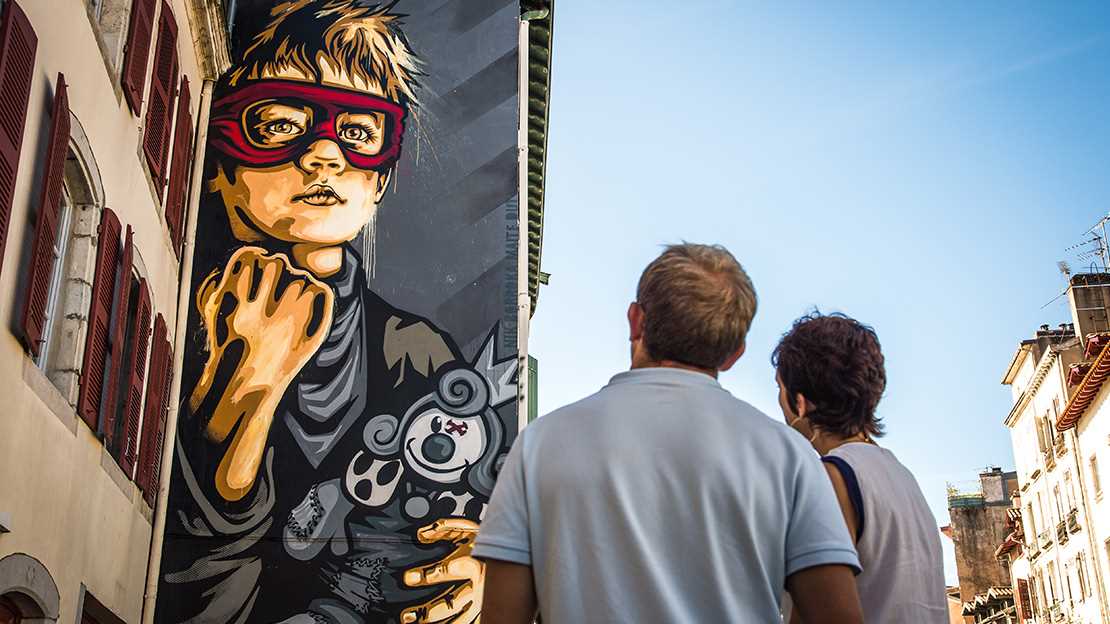
Street art has emerged as a powerful form of urban expression, transforming cities into open-air galleries. Bayonne has become a hub for this urban art form, with its streets adorned with vibrant and thought-provoking murals.
Street art allows artists to showcase their creativity and engage with the community in a unique way. It breaks traditional boundaries and brings art to unexpected places. The streets of Bayonne have become a canvas for self-expression, where artists can convey their messages to a wide audience.
One of the defining features of street art is its temporary nature. Unlike traditional art forms, street art is ephemeral, constantly changing and evolving. It adds a sense of surprise and discovery to the urban landscape, as new artworks appear and old ones fade away.
Street art also has a strong social and political dimension. Many artists use their work to raise awareness about important issues, such as social inequality, environmental concerns, and cultural diversity. By using public spaces as their canvas, they spark conversations and encourage dialogue among citizens.
Bayonne’s street art scene is diverse and eclectic, featuring a wide range of styles and techniques. From large-scale murals to smaller stencils and graffiti, there is something for everyone. The city has embraced this art form, supporting and encouraging local artists to create their masterpieces.
A visit to Bayonne is like exploring an outdoor gallery, where every street corner holds a new surprise. The city’s commitment to street art has turned it into a vibrant and dynamic cultural destination. Whether you’re an art enthusiast or simply curious about this urban art form, Bayonne’s street art scene is not to be missed.
| Advantages of Street Art: | Disadvantages of Street Art: |
| – Creativity is unrestricted | – Some artworks may be offensive |
| – Engages with the community | – Can be seen as vandalism |
| – Raises awareness about social issues | – May not be appreciated by everyone |
| – Adds vibrancy to the urban landscape | – Artworks may be temporary |
Talented Muralists
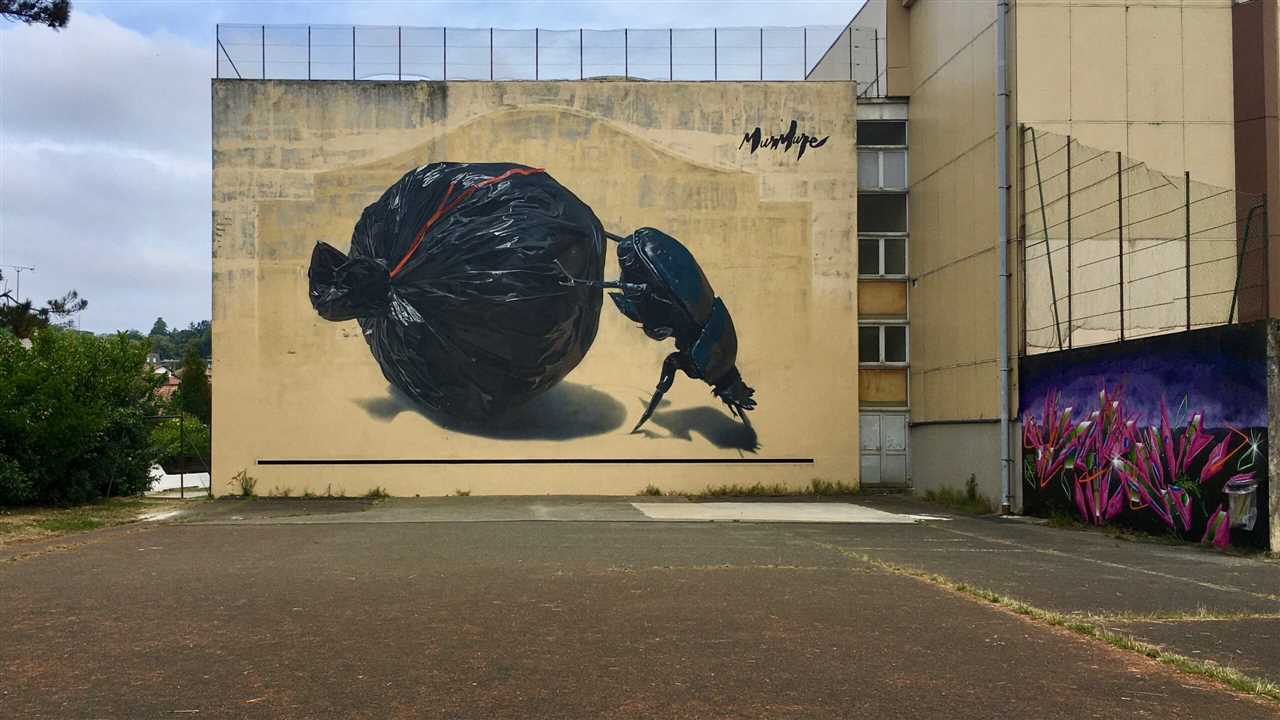
One of the prominent features of Bayonne’s street art scene is the immensely talented muralists that contribute their creativity to the city’s walls. These artists possess a unique ability to transform ordinary buildings into vibrant works of art that captivate passersby.
Local Masters
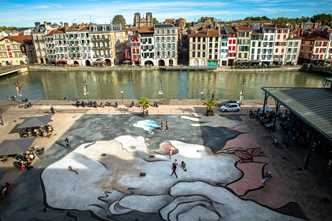
Bayonne is home to a diverse community of local muralists who have made their mark on the city’s landscape. Their distinct styles and artistic visions are evident in the wide array of murals that can be found throughout the town.
One such artist is Maria Rodriguez, whose stunning murals often depict themes of social justice and equality. Her use of bright colors and intricate patterns has earned her international recognition and admiration.
Another local talent, Jonathan Hartman, specializes in large-scale surrealist murals that blend elements of fantasy with reality. His unique style creates a surreal atmosphere that draws viewers into his imaginative worlds.
International Collaborations
Bayonne’s street art scene also attracts muralists from around the world, who are drawn to the city’s vibrant artistic community. These international collaborations bring a fresh perspective and new ideas to the local scene.
One such collaboration resulted in a breathtaking mural by renowned French artist Dominique Dupont and Italian muralist Alessandro Rossi. The mural, titled “Harmony in Diversity,” portrays the beauty of different cultures coming together in a unified way.
Another notable collaboration was between Bayonne-based muralist Sofia Hernandez and Brazilian artist Eduardo Santos. Their mural, entitled “Nature’s Symphony,” celebrates the beauty of nature and the importance of preserving the environment.
The talented muralists of Bayonne continue to leave their mark on the city’s streets, infusing them with color, creativity, and meaningful messages. Their work serves as a visual reminder of the power of art to transform spaces and inspire communities.
The Art of Tags and Graffiti
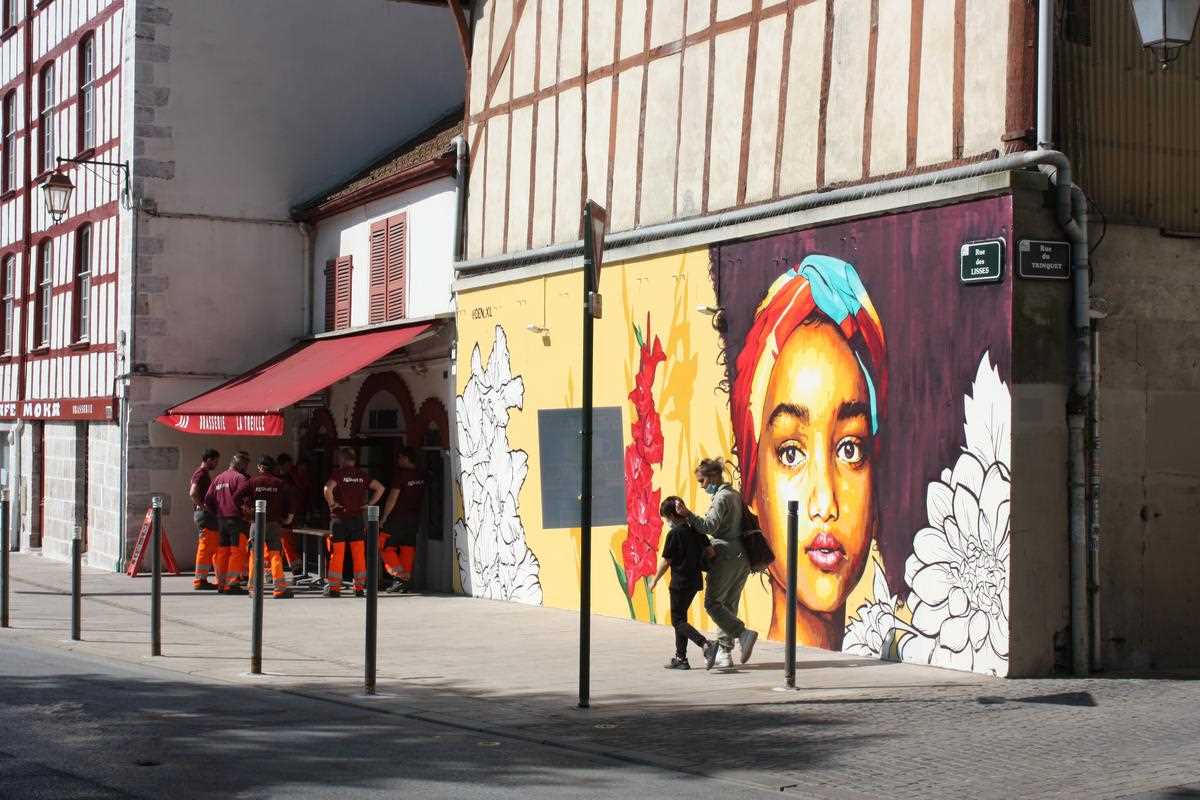
When it comes to street art, tags and graffiti are a vital part of the culture. While many people may see them as mere vandalism, they actually hold a significant artistic value.
Tags are the most basic form of graffiti, consisting of a stylized signature or nickname. They are often created quickly and with a spray can or marker. Despite their simplicity, tags can be incredibly intricate and demonstrate the artist’s unique style.
Graffiti, on the other hand, encompasses a wider array of artistic expressions. It can include elaborate murals, political messages, or even social commentary. Graffiti artists use various techniques, such as stencils and wheatpasting, to create their works.
While traditional art is often confined to galleries and museums, street art allows artists to reach a wider audience. Tags and graffiti can be found on buildings, walls, and even sidewalks, making art accessible to everyone. They add vibrancy and creativity to the urban landscape, transforming mundane spaces into outdoor galleries.
Street art has long been associated with rebellion and counterculture. It serves as a way for artists to express themselves and challenge conventional norms. Tags and graffiti have the power to disrupt and provoke, forcing viewers to engage with their surroundings and question societal conventions.
However, it is important to note that there are legal and illegal forms of graffiti. Legal graffiti, often created with the permission of property owners or as part of sanctioned events, promotes community engagement and beautification. Illegal graffiti, on the other hand, can result in fines and legal consequences.
In Bayonne, the street art scene boasts a diverse range of tags and graffiti. From colorful murals to thought-provoking stencil art, the city’s walls are a testament to the creativity and talent of its artists. Exploring the streets of Bayonne is like embarking on a journey through an ever-changing art gallery.
So next time you come across a tag or a graffiti piece in Bayonne, take a moment to appreciate the artistry behind it. Whether it’s a simple tag or a complex mural, each piece contributes to the vibrant tapestry of street art in the city.
Street Art as a Form of Expression
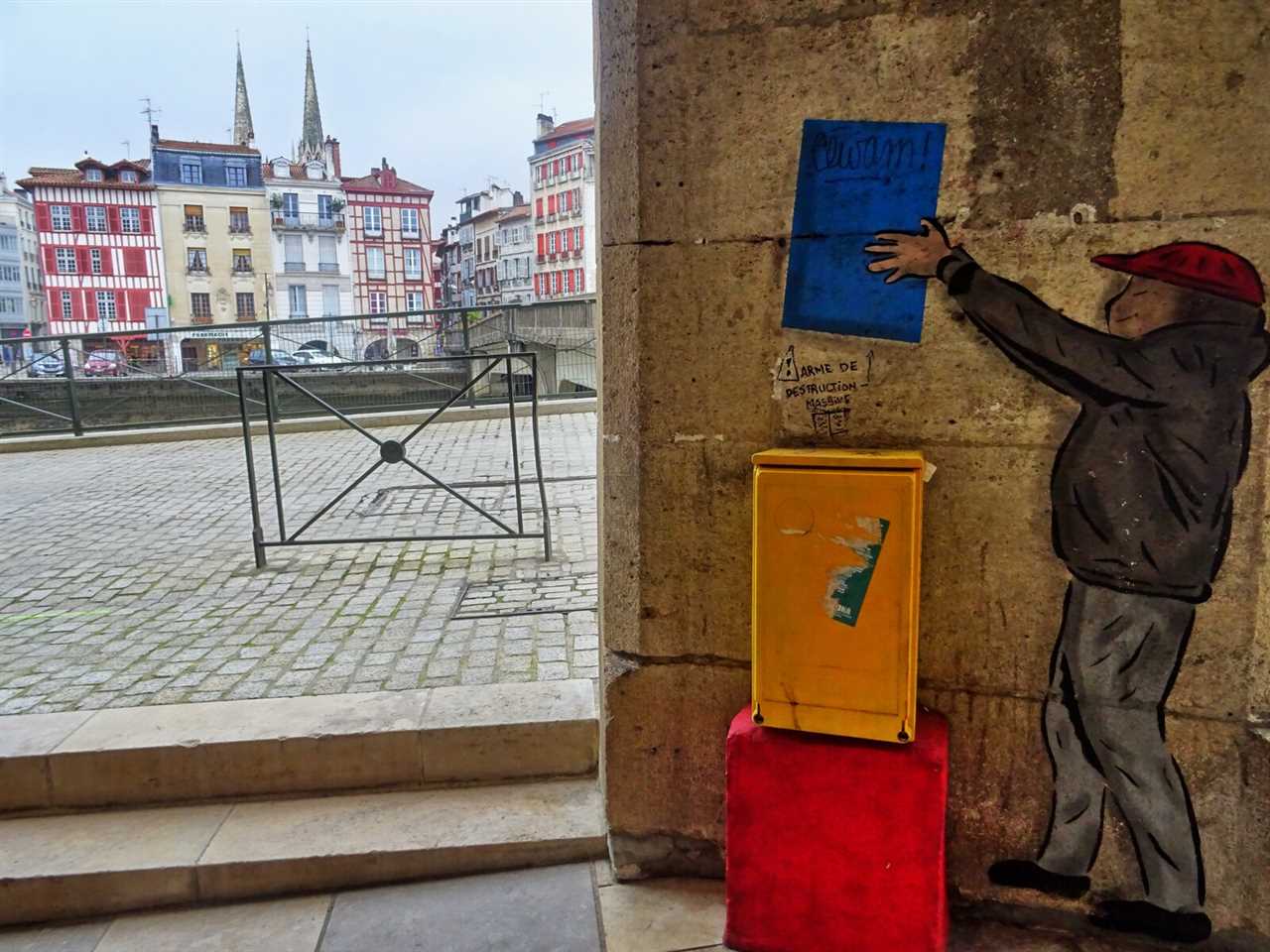
Street art is a powerful form of expression that brings vibrancy and creativity to urban spaces. It allows artists to communicate their ideas, feelings, and perspectives to a wide audience. Unlike traditional art forms, street art is public and accessible to anyone who passes by, transcending barriers and reaching people from all walks of life.
One of the key characteristics of street art is its ability to challenge societal norms and conventions. Artists often utilize their work to make political or social statements, bringing attention to issues that are often overlooked or ignored. By taking their art to the streets, artists can engage with a diverse audience and spark conversations about important topics.
The Power of Visual Impact
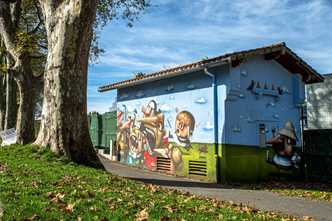
Street art is often visually captivating, using bold colors, intricate designs, and large-scale compositions to grab attention. The environment in which street art exists plays a significant role in how it is perceived. The juxtaposition of artwork against the urban landscape can have a powerful impact on viewers and prompt them to reflect on their surroundings.
Preserving Cultural Heritage
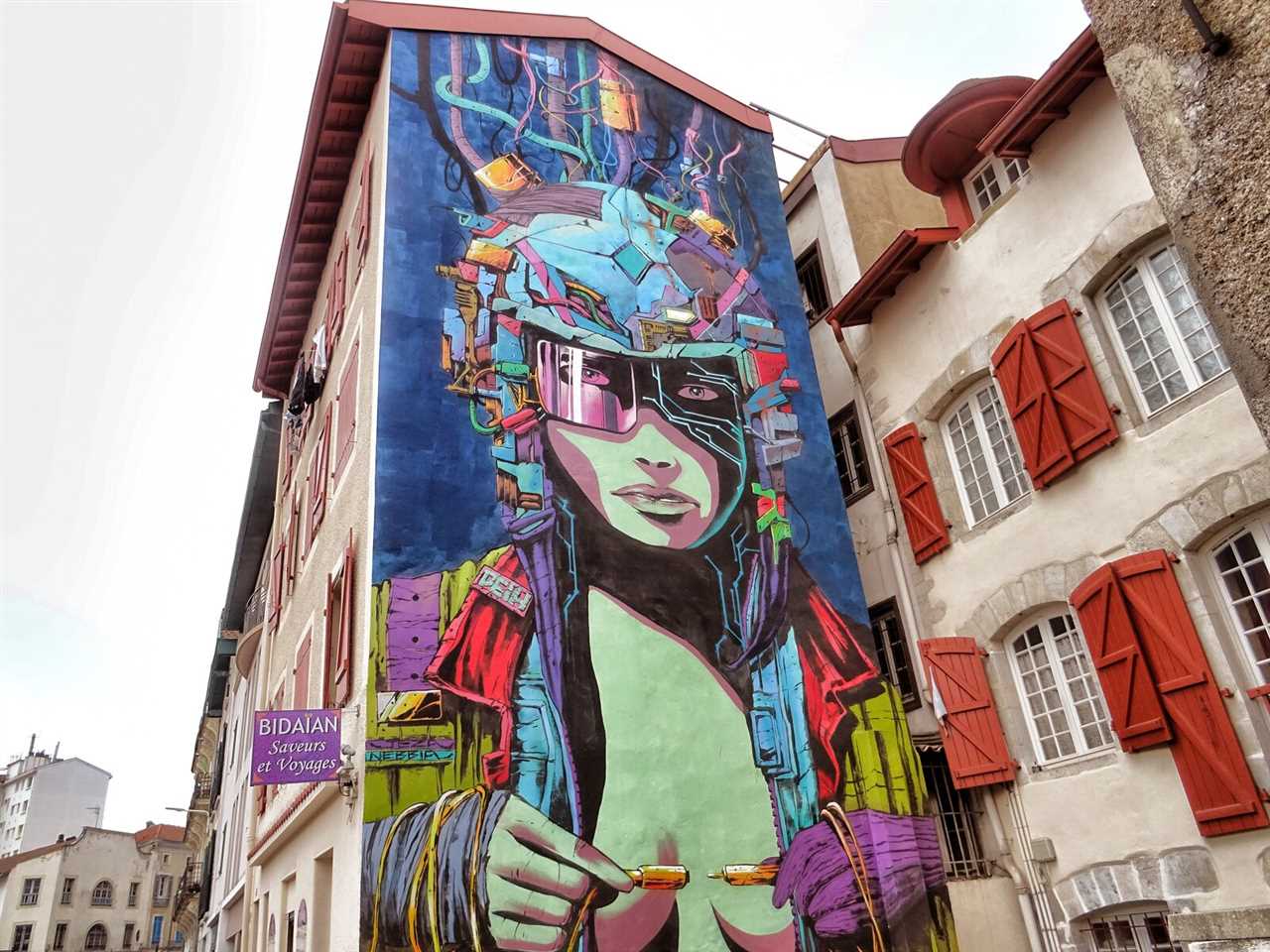
The Stencil Art Movement
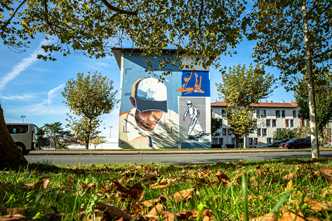
The stencil art movement is an innovative form of street art that has gained popularity in Bayonne. Artists create intricate designs using stencils, which they then spray paint onto walls and surfaces in public spaces. This technique allows for detailed and precise artwork that can be easily replicated and shared.
Stencil art has a rich history, with roots in political and social activism. Artists use this medium to express their views and make powerful statements about the world around them. By carefully selecting images and symbols, they can convey emotion and spark conversations among viewers.
Techniques and Tools
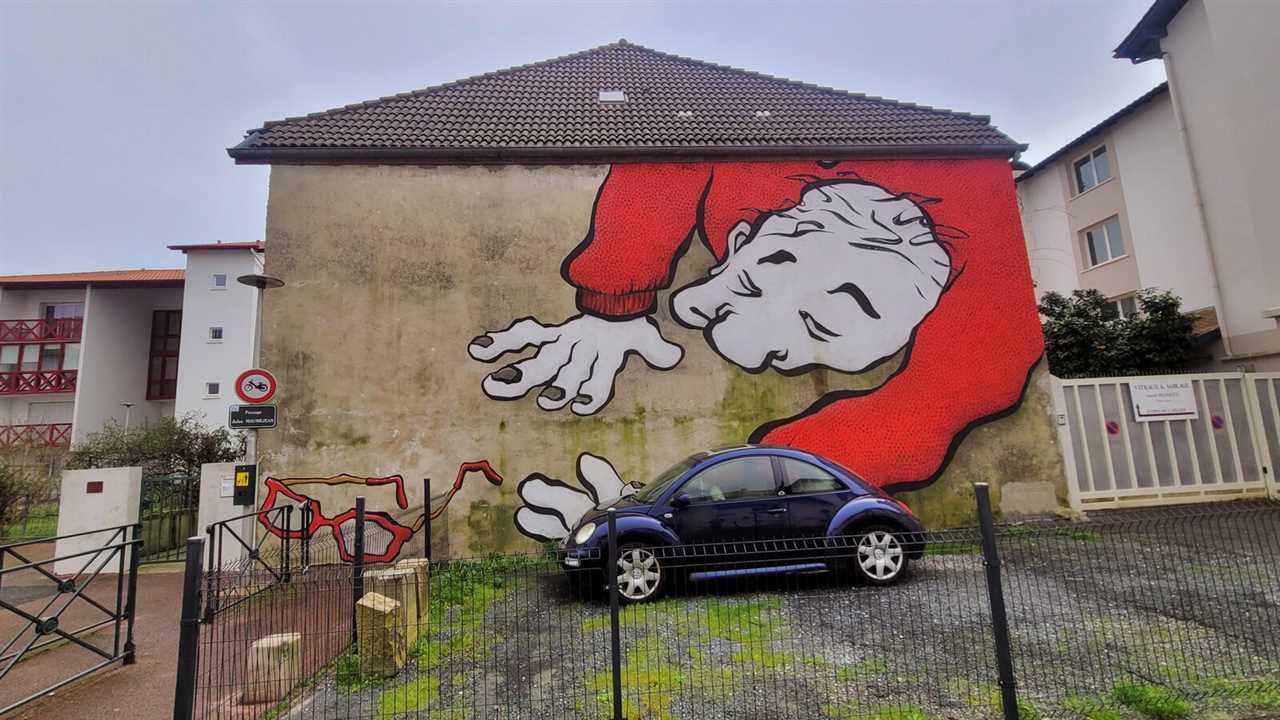
The process of creating stencil art involves several steps. Artists start by designing a stencil template, usually using computer software or by hand. This template is then carefully cut out of a sturdy material like cardboard or acetate.
Once the stencil is ready, artists choose their color palette and select the appropriate spray paint. They then position the stencil on a surface, using tape or adhesive to secure it in place. With careful precision, they spray paint through the stencil, creating a crisp and vibrant image.
Impact and Appreciation

The stencil art movement has had a significant impact on the art scene in Bayonne. It has transformed dull spaces into colorful and thought-provoking artworks. Many people appreciate and admire these creations, with local residents and tourists seeking out these pieces while exploring the city.
Furthermore, stencil art has opened doors for aspiring artists to showcase their talent. It provides an accessible way for individuals to express themselves and share their messages with a wide audience. This form of street art has become a powerful tool for social commentary and artistic expression.
Overall, the stencil art movement has brought vibrancy, creativity, and meaningful dialogue to the streets of Bayonne. Through the use of stencils, artists continue to inspire and provoke thought, making their mark on the urban landscape.
Street Art Murals in Bayonne
Bayonne is a vibrant city known for its rich art scene, and one of the most captivating aspects of this scene is the street art murals that adorn the walls of the city. These murals not only add color and beauty to the streets, but they also tell stories, convey messages, and reflect the unique culture and history of Bayonne.
The street art in Bayonne is diverse and eclectic, featuring a wide range of styles and themes. From vibrant and colorful abstract designs to realistic portraits and intricate stencil work, there is something for everyone to admire and appreciate.
Many of the murals in Bayonne are created by local artists who are passionate about their craft and dedicated to making the city a more visually appealing place. These artists use their art to express themselves, make social and political statements, and bring the community together.
Popular Street Art Murals in Bayonne
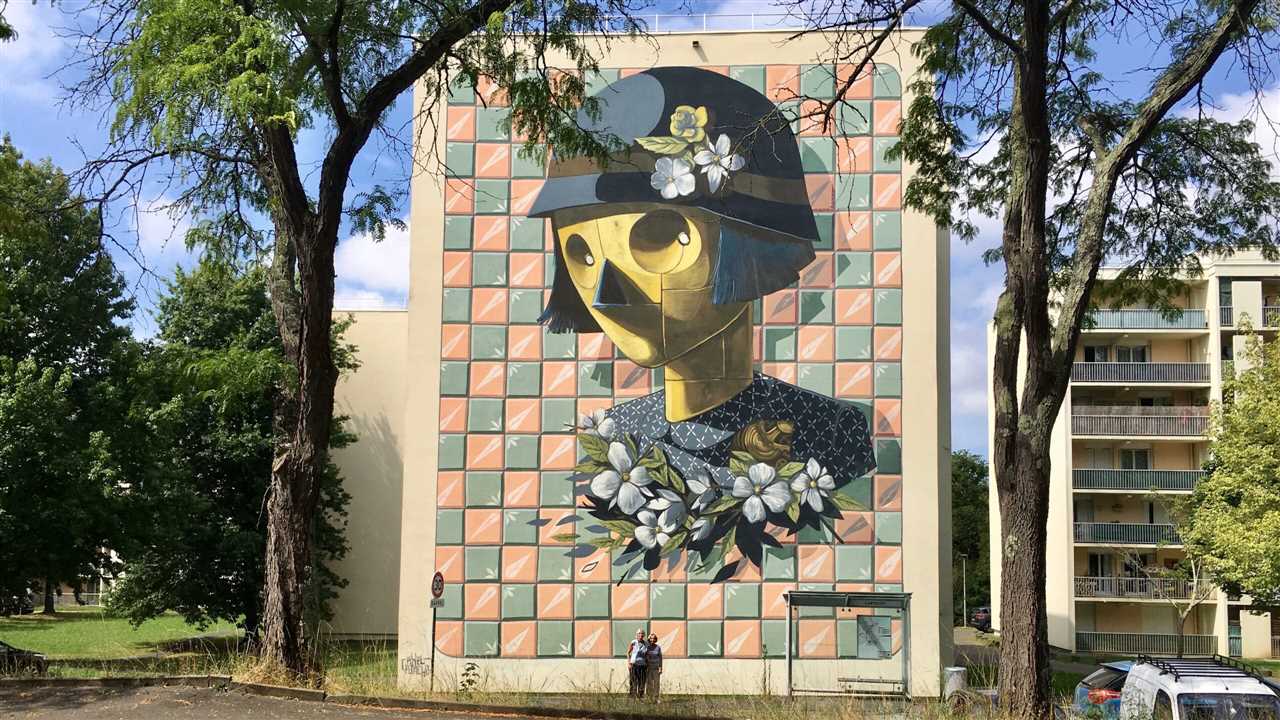
One of the most popular street art murals in Bayonne is located on Rue Sainte-Catherine. This mural, created by renowned artist Banksy, depicts a young girl reaching for a can of paint, symbolizing the power of art to inspire and transform.
Another notable mural can be found on Quai des Corsaires. This large-scale mural showcases a colorful and intricate design featuring various elements of nature, such as flowers, birds, and trees, creating a harmonious and peaceful atmosphere.
Appreciating Street Art in Bayonne
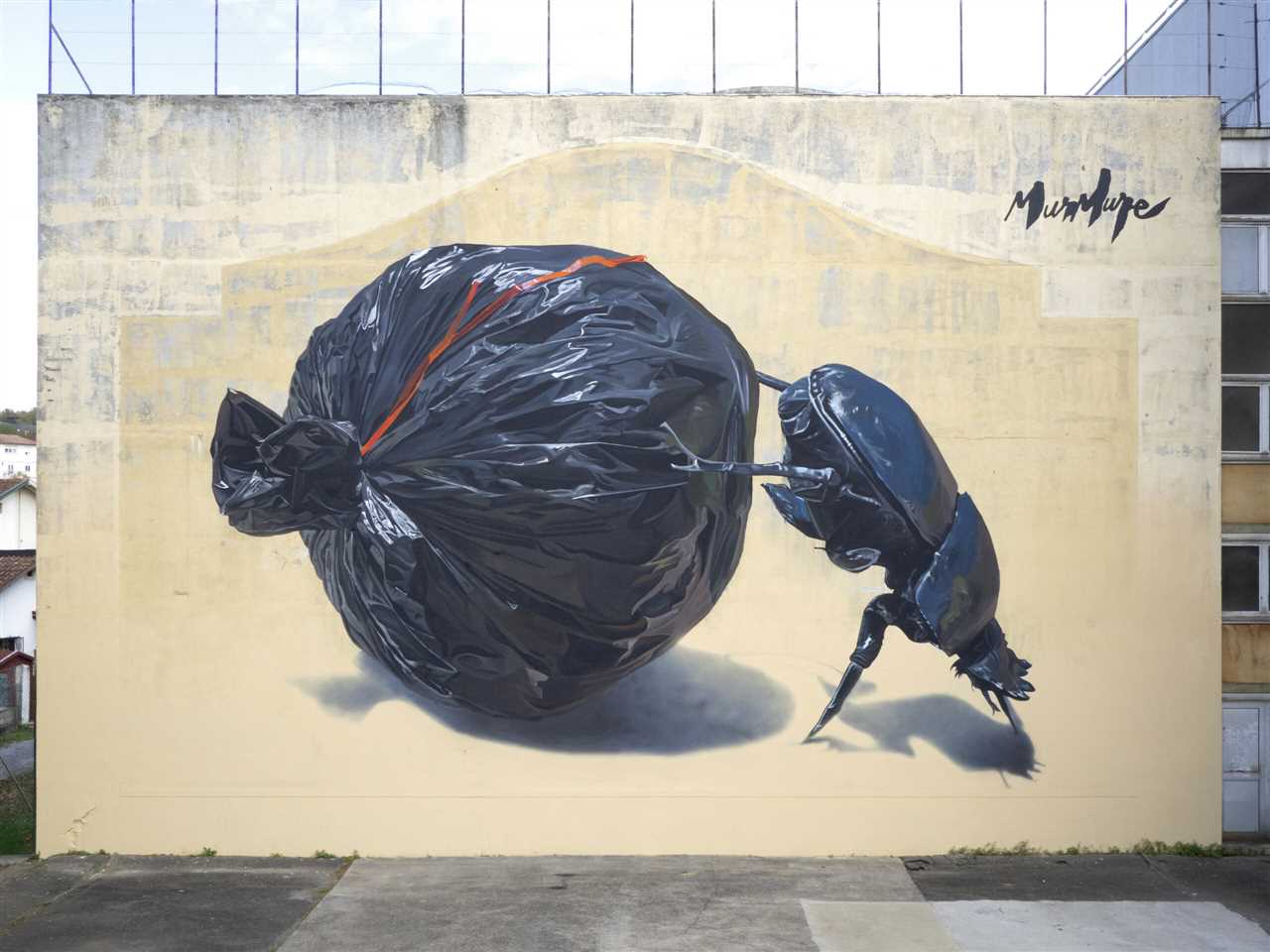
Bayonne is a city that truly values and celebrates its street art. Visitors and residents alike can appreciate these murals by taking self-guided tours or joining organized street art tours. These tours provide insights into the artists’ inspirations, techniques, and stories behind their works.
Moreover, the city of Bayonne regularly hosts street art festivals and events, where artists come together to showcase their latest creations. These events create a dynamic and ever-changing street art scene, adding to the vibrancy and cultural richness of the city.
| Artist | Location |
|---|---|
| Banksy | Rue Sainte-Catherine |
| Unknown | Quai des Corsaires |
Exploring Different Styles of Street Art
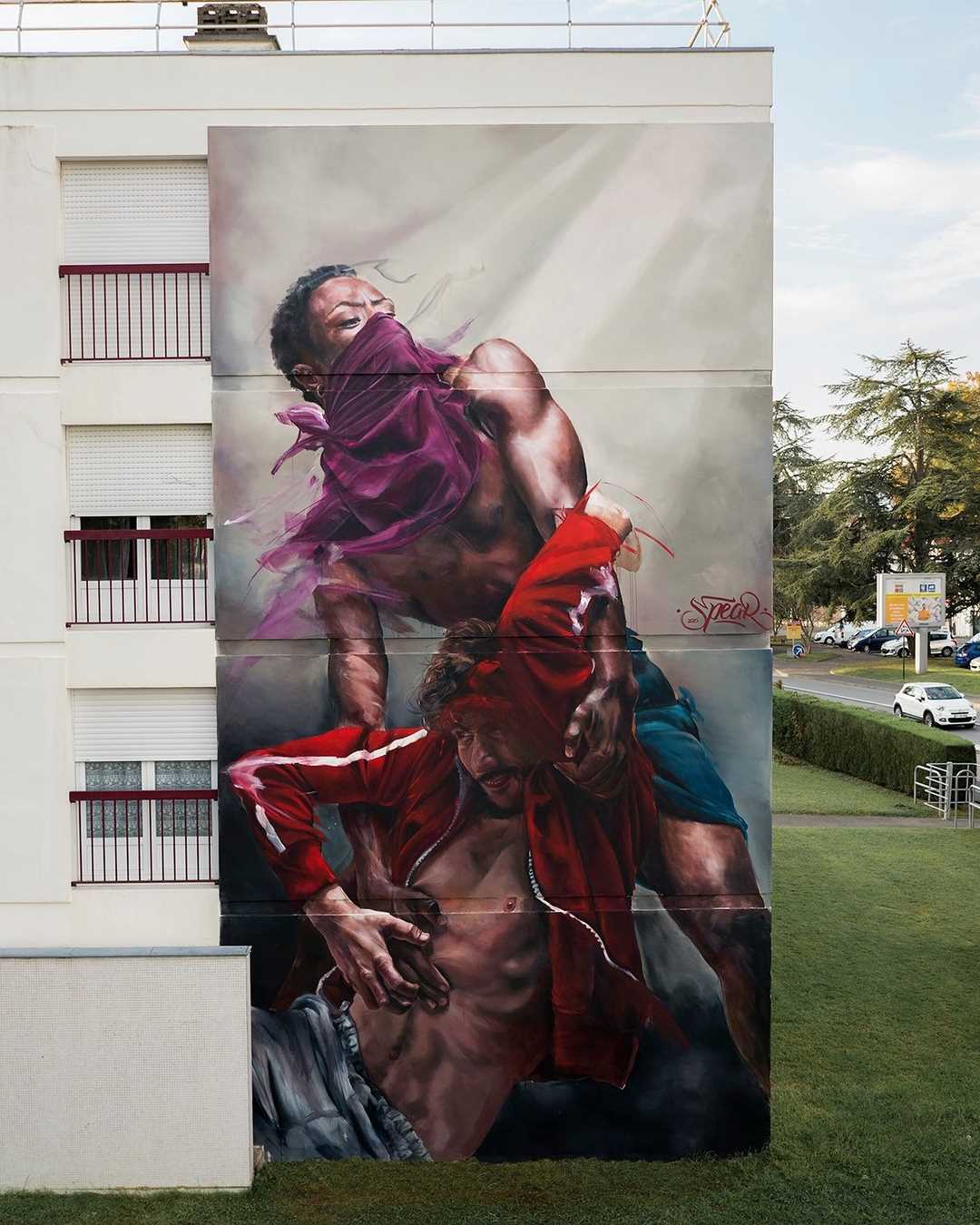
One of the most common styles of street art found in Bayonne is graffiti. Graffiti is characterized by its bold and colorful designs, often featuring stylized lettering and symbols. Artists use spray paint and other materials to create their pieces, adding a splash of color to the city’s walls and buildings.
Another popular style of street art in Bayonne is stencil art. Stencil art involves creating a design or image by cutting out a stencil and then spraying paint over it onto a surface. This technique allows artists to create intricate and detailed images that can be repeated multiple times.
Some street artists in Bayonne also specialize in wheatpaste art. Wheatpaste art involves creating images or posters using a mixture of wheat flour and water, which is then applied to a surface using a brush or roller. This technique allows for large-scale and ephemeral works of art that can easily be removed or painted over.
Street art in Bayonne is not limited to traditional forms, however. Some artists use mixed media to create their pieces, incorporating other materials such as textiles, found objects, or even technology. This allows for a more immersive and multidimensional experience for viewers.
Whether it’s graffiti, stencil art, wheatpaste, or mixed media, the street art scene in Bayonne offers a diverse range of styles and techniques. Exploring the different styles of street art is like taking a journey through the creative minds of the artists, each piece telling a unique story and leaving its mark on the city’s landscape.
Preserving and Protecting Street Art

Street art has become an important form of artistic expression in cities around the world, including Bayonne. These vibrant and thought-provoking works of art can often reflect the culture, history, and political climate of a city. However, as with any form of art displayed in public spaces, street art is vulnerable to damage, vandalism, and destruction.
Preserving street art
Preserving street art is essential to ensure its longevity and cultural significance. There are several ways that street art can be preserved:
1. Documentation:
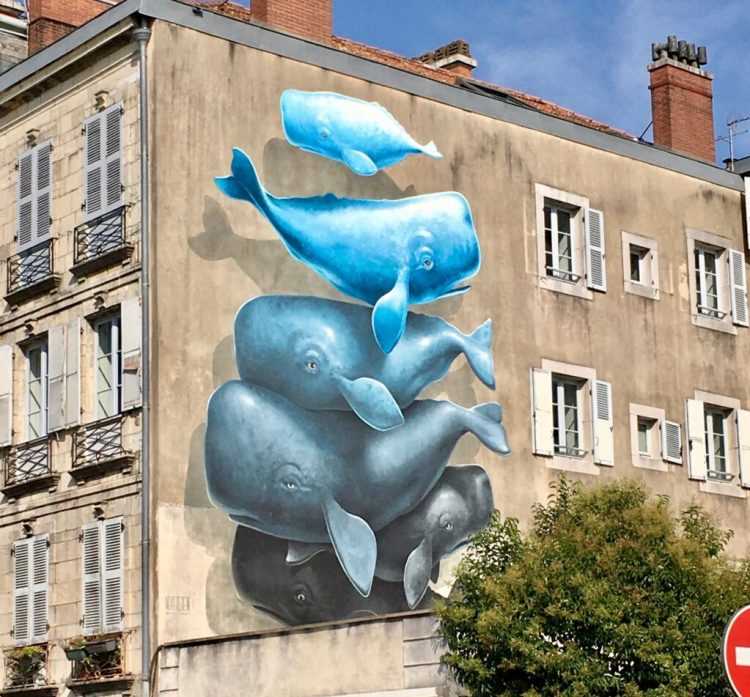
Documenting street art through photography or videography is a crucial step in preserving these temporary works. By capturing high-quality images, the art can be shared online, in books, or galleries, allowing it to be enjoyed by a wider audience even if it no longer exists in its original form.
2. Conservation:

Conservation techniques can be used to protect street art from natural elements, such as sun exposure, rain, and pollution. Clear coatings or varnishes can be applied to protect the artwork, and regular maintenance and cleaning can help extend its lifespan.
Protecting street art
While preserving street art focuses on maintaining its physical condition, protecting street art involves preventing damage and vandalism. Here are some ways street art can be protected:
1. Legal recognition:
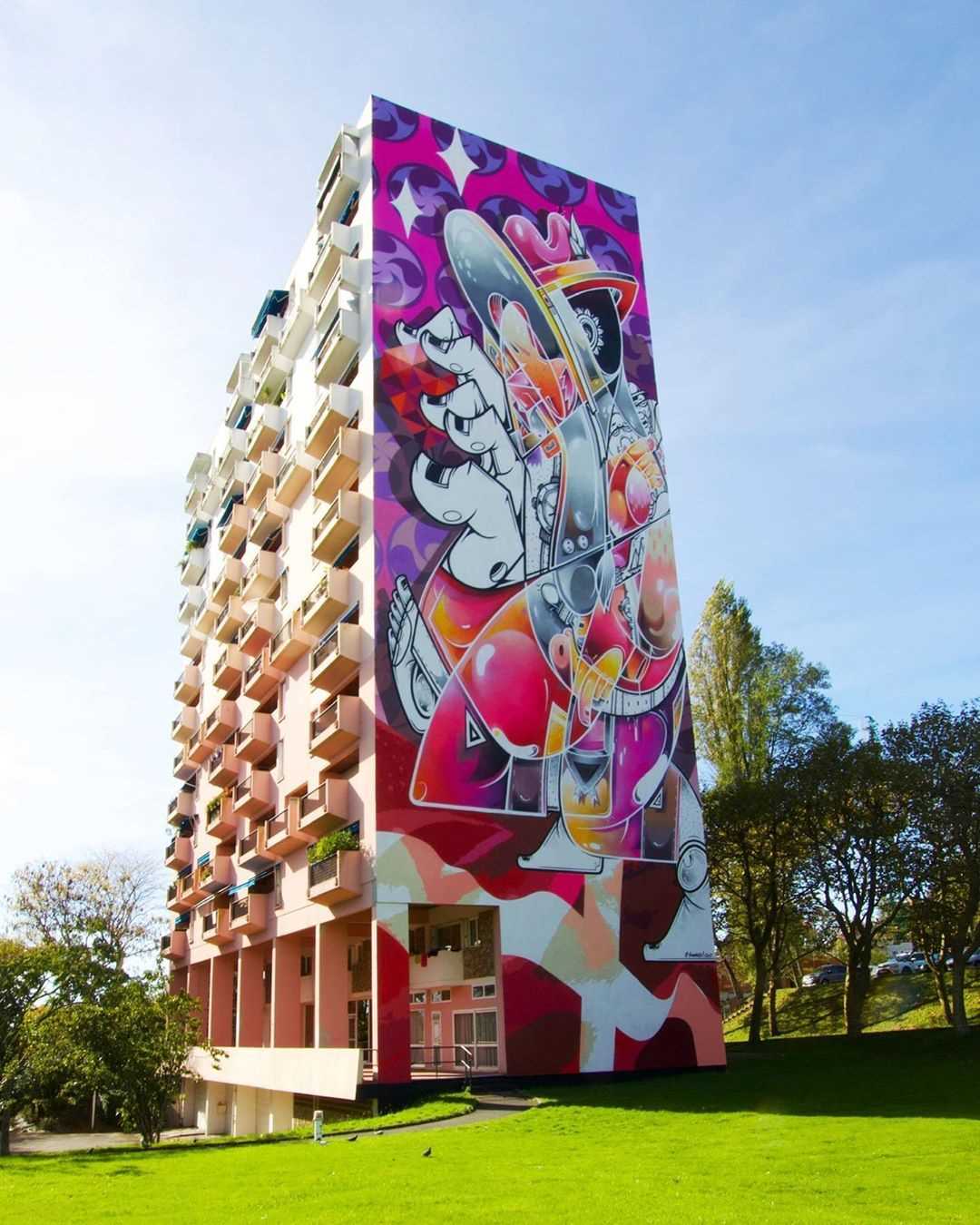
Giving street art legal recognition ensures that it is protected by law. This recognition can come in the form of permits, licenses, or designated areas where street artists are allowed to create their work without fear of prosecution.
2. Community involvement:
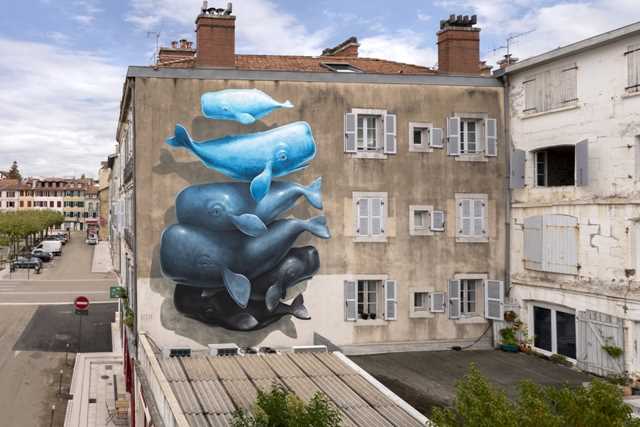
Building a sense of community around street art can help protect it. When local residents and businesses take ownership of the street art in their neighborhood, they become more invested in its preservation and are more likely to intervene and prevent damage or vandalism.
Preserving and protecting street art is crucial for maintaining the cultural heritage of a city. By taking these steps, we can ensure that future generations can continue to appreciate and be inspired by the incredible street art found in cities like Bayonne.
The Impact of Street Art on Urban Spaces
One of the most notable impacts of street art is its ability to bring life to once dull and neglected areas. Through vibrant and thought-provoking murals, street art has the power to turn empty walls and buildings into public galleries. It adds color and character to the urban landscape, making it more visually appealing and engaging for both residents and visitors.
Moreover, street art has the potential to foster a sense of community and pride among the locals. It often reflects the culture and identity of a specific place, serving as a visual representation of its history and values. Street art can spark conversations and create a sense of belonging, as people come together to appreciate and interpret the artworks.
In addition to its aesthetic and social impact, street art has also become a tourist attraction in many cities. Street art tours have become popular, allowing people to explore different neighborhoods and discover hidden gems. The presence of street art can contribute to the economic development of a city, attracting visitors and boosting local businesses.
However, street art also raises questions about its legality and the role of artists in public spaces. While some view it as vandalism, others see it as a form of free expression and a way to reclaim public spaces. The debate surrounding street art continues, but there is no denying its impact on urban spaces.

I am a mural enthusiast and a fervent admirer of street art. Rather than creating murals myself, I am passionate about collecting them. My love for street art knows no bounds. I am dedicated to curating and cherishing these artworks that grace the streets. My collection stands as a testament to my profound appreciation for this form of artistic expression.
read about me



